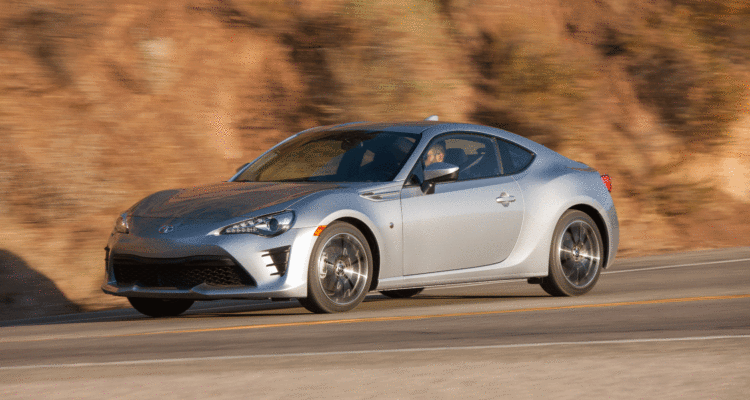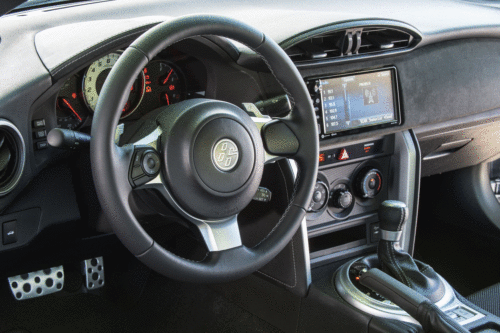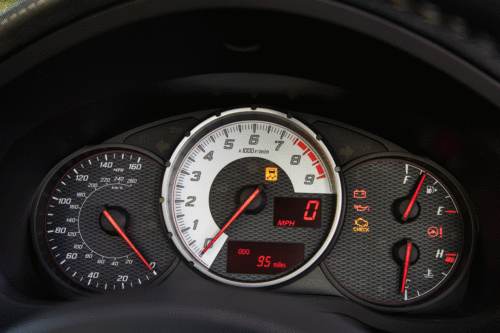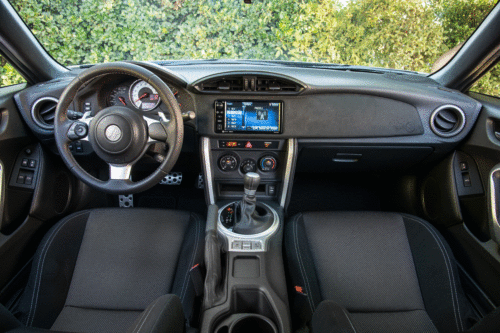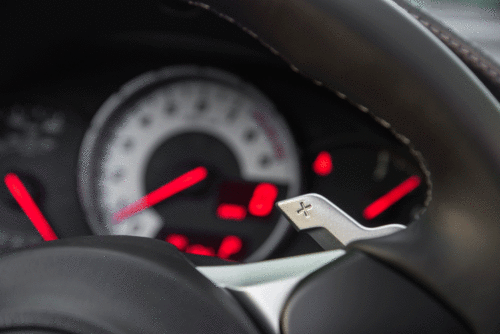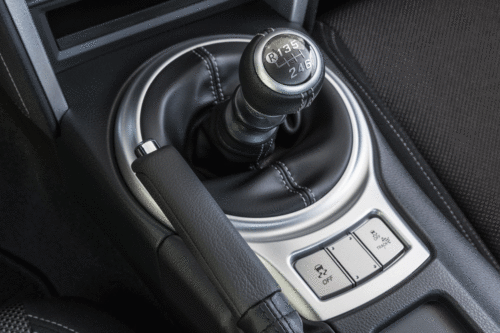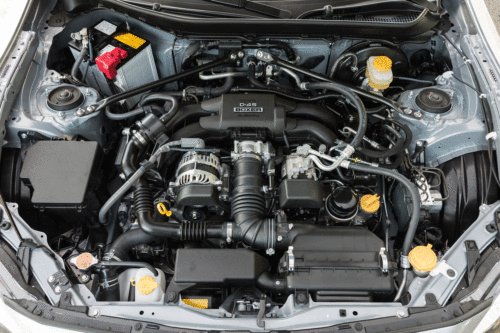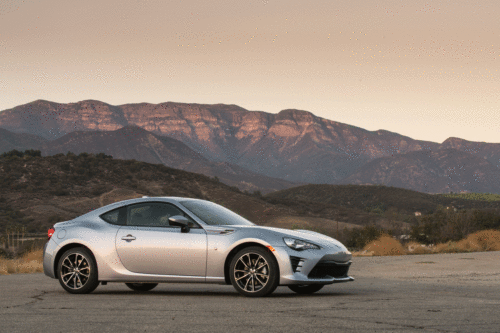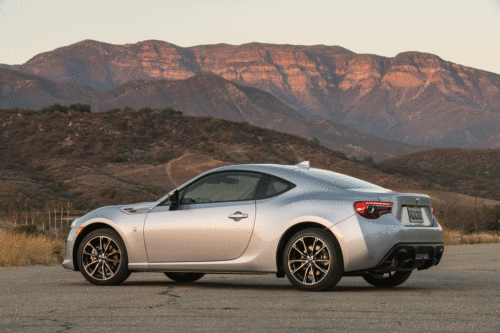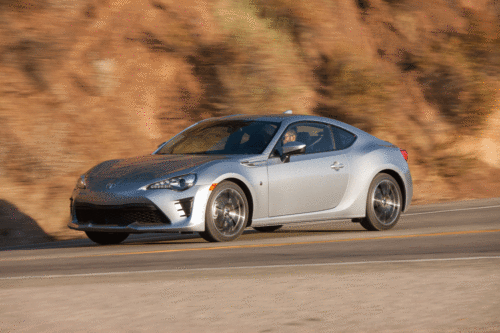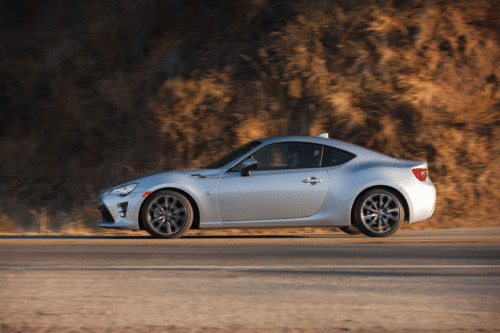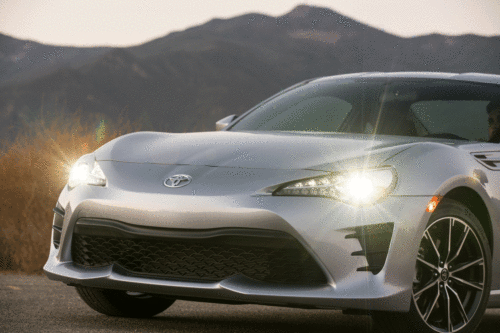So, is the 2017 Toyota 86 a Subayota or a Toyobaru?
A bit of both, it seems.
It started life as the Scion FRS and Subaru BRZ. When Toyota killed Scion, it resurrected a number from Toyota’s past, the AE86 version of the Corolla to rename it a Toyota. Minus the AE, of course. Subaru still has the BRZ.
In both cases, it’s a bit of a departure for both carmakers. In Toyota’s case, it’s rear-wheel drive. In Subaru’s case, it’s not all-wheel drive.
In either case, it’s a brilliant little car.
The styling is superlative, with a cab-backward coupe profile. The handling is similarly worthy, with a good front-to-back weight balance that carves corners and lets you have some fun wagging the tail. (A track mode completely defeats the electronic stability nannies.)
The powertrain has a lot going for it, with a powerful boxer engine up front mated to a six-speed manual. That engine is the Subaru bit: the rest of the car appears to be largely Toyota, from the interior controls to the general esthetic.
It’s great fun to toss around, and the engine has enough jam to chirp the wheels all the way up to fourth gear if you hold the upshifts long enough.
The clutch and transmission make this manual a joy, with slick, crisp shifts, and a clutch take-up that’s easy to control. You could kill it by giving it an automatic, but when it’s this much fun, and this easy, as a stick, why?
As fun as it is, it’s not all peachy, however. The car has four seats but I’m at a loss to know why. I reached behind the passenger seat and found zero room for legs. With the driver’s seat adjusted for my 5-7 self, there was just enough room for my wrist. Put someone in the rear right seat and your passenger is going to get up close and personal with his knees.
The rear seat back folds down, in one unit. Which is probably the configuration I’d leave it. You get OK cargo room with it up, better when it’s down.
While the engine is powerful and torquey, it sounds like it’s really working at it. It’s not a pleasant exhaust growl you hear, it’s more a mechanical sound. It doesn’t sound smooth.
The six-speed transmission and boxer engine combination make for some impressive fuel economy: it averages 5.3 l/100km when at 110 km/h. Another strong point is the torque gives the car a bit of elasticity in sixth gear: you don’t need to downshift if you’ve had to slow down slightly. It will pull you nicely back to 110 even from 80.
Another strong suit for the car is excellent visibility despite the coupe shape. It’s not hard to get all three mirrors to give you side-to-side coverage at the rear thanks to the larger rear window.
The interior puts all the controls you need in all the right places. The stylish instrument panel also prioritizes engine speed, with the tach front and centre. An analog speedometer is on the left, while a digital speed readout is contained in the infield of the tachometer.
The sound system works well, but even though it has volume and channel change remoted out to the steering wheel, it still has an aftermarket feel. For example, the voice-command button is on the audio system face. As well, the buttons on the system’s control panel are different than typical Toyota controls. Finally, the sound system looks just like you’d expect it to look if you had your local audio shop put it in for you.
Whether all that amounts to criticism, however, is up to the reader. For a car marketed toward the tuner crowd, a dash that lets owners install aftermarket head units without a sometimes-tacky adapter plate or major dash surgery is probably a good thing.
That it’s not integrated into the dash the way it is in the new Toyota Camry (which makes aftermarket install jobs all but impossible), may actually be a positive for the car’s target market.
Despite the car’s low-slung height, I didn’t find it difficult to get in or out.
The refreshing thing about the 86 is it’s the type of car we thought we might never see from Toyota again. About 10 years ago, I asked a senior executive if there were any plans to re-enter the market for sport coupes similar to the Celica. The response: “What market?”
Now, the Japanese carmaker is even threatening to bring back the Supra. Can we stand the strain?
2017 Toyota 86
Engine: 2.0-litre dual overhead cam horizontally opposed four-cylinder,
Power: 205 hp @ 7,000 rpm (manual); 200 hp @ 7,000 rpm (auto),
Torque: 156 lb-ft. @ 6,400 rpm (manual); 151 lb-ft @ 6,400 rpm (auto),
Transmission: six-speed manual, six-speed auto, opt.,
Brakes: four-wheel discs,
Suspension: MacPherson strut with stabilizer bar (front); double-wishbone type with limited slip differential (rear),
Fuel economy (l/100 km, city/highway/combined): 11.3/8.3/9.9 (man.); 9.9/7.3/8.7 (auto),
Price: $29,580, base MSRP (and as-tested)
Related links:
Toyota Canada
Car and Driver



